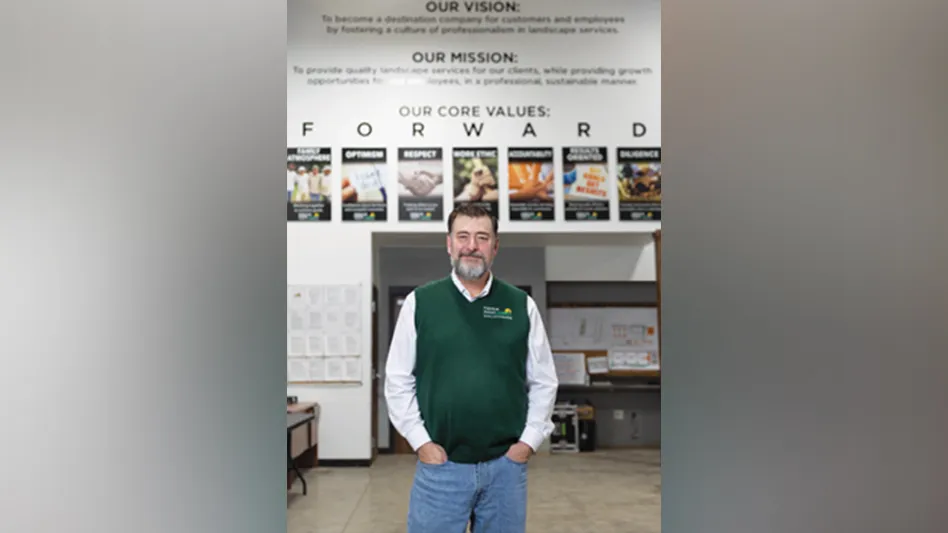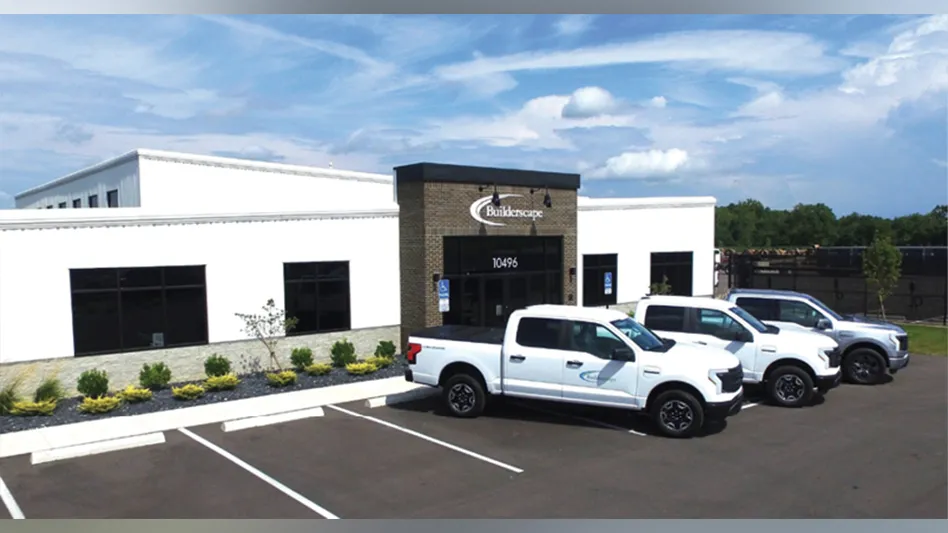
Change of direction
Gabe Lobato, owner, La Cholla Landscaping
Last time we checked in:
To get to $1 million, Lobato was going to have to pursue more commercial maintenance, which meant visiting potential customers and pitching his company’s services. Since that is not a strength of Lobato, he was going to have his brother serve in that role for the Tucson, Arizona-based company.
But after a few weeks, a combination of the work/family dynamic, holes in the process and not having enough will to stay with the process, the two had to part ways. Now, that leaves Lobato with a hole to fill because he doesn’t want to do it himself. The change also has him questioning whether he wants to pursue more commercial maintenance work at all.
“I felt like I was set up to pursue something that I’ve never done,” he says. “It’s an extremely hard, discouraging task and does nothing to motivate me or make me feel good.”
Latest updates:
While Laflamme and Arman are major proponents of commercial maintenance work to grow the bottom line, Lobato is challenging that. Lobato admits he has a fear of rejection and going from property to property to pitch his company isn’t a strength or something he wants to do.
“I would definitely recognize it as a flaw in my character,” he says. “I just don’t know how you overcome that.”

But before scrapping the idea of more commercial work, he is turning to technology.
He’s working with software that calls commercial property managers and attempts to schedule appointments with potential customers. He’s told it will take about three months to see a difference.
“My hope is that we’re not going to have to do a cold door-to-door system. If we had to do a cold door-to-door system, I’m not sure we’re going to be able to stick it out.”
Along with the fear of rejection, Lobato also questions if the company has the financial means it takes to pursue commercial work, and he would rather learn how to do residential better, which, if successful, may fuel him to pursue more commercial.
“I’m just really conservative,” he says. “I’ve never had to take out a loan for anything but cars or property.”
Playing it safe has worked for Lobato, so he has to really figure out if he wants to get outside of his comfort zone and be more risk averse. Lobato did win a commercial job at good margins, but Lobato already had a relationship with that person, so it didn’t necessitate any selling on his part aside from putting in a bid.
That win didn’t result in a confidence boost for Lobato, and the thought of all that goes into managing a commercial project is a little overwhelming.
“It’s the equivalent of 10 monthly jobs,” he says. So, for now he’ll test out the software.
“If that doesn’t work I have no idea what would become of our pursuit of commercial contracts,” he says.
Harvester’s take:
“He’s done well, but he’s very conservative. He is in some ways, in the way of his own progress,” Laflamme says. “Bill and I have talked, and I think if he just can’t handle the idea of commercial accounts, then it’s best we work with him to optimize the residential he has and try to introduce small commercial jobs in the mix. It’s as easy as that.”

Price check
Kimberly Rowe & LaMont Hess, owners, Outdoor Expressions PA
Last time we checked in:
Hess and Rowe purchased Outdoor Expressions in July of 2017. The company was once a multimillion-dollar success but fell on hard times and Hess and Rowe hope to resurrect it. They needed to go through each customer and sort out which ones were profitable and should be kept. They also needed to get rid of broken down equipment, hire more people and pursue more commercial work.
Latest updates:

Along with winning a 47-home HOA job, the couple has taken a big step in raising prices for residential jobs about 15 percent, and some 40 percent. They also made everyone prepay for mowing services at the Harrisburg, Pennsylvania company. “I wanted maintenance paid up front otherwise our money is out 45 days,” Rowe says.
They sent contracts to the accounts, explaining to customers there would be a price change, and customers would now be expected to prepay at the first of every month. They sent the letters in mid-February and as of late February received four signed agreements, no questions asked.
Hess explained in the letter that to keep costs “at or near where we were, we need to make the following changes.”
“I didn’t address anything about going up,” Hess says. Also, Rowe says there was no reason to “create a negative.”
For commercial clients, Rowe says they are communicating the increase face-to-face.
“If you are going to do commercial in this day and age you need to be seen and they need to know who they are dealing with and that you care,” she says.

Rowe and Hess admitted they were a little nervous that none of the contracts would come back signed, but they had comfort in knowing that their biggest client, which is another HOA, was already on board. Because of the importance of that client, Hess attended an HOA board meeting to discuss those changes in person and he received very little pushback.
While they hope to raise the prices for unprofitable clients or drop them as clients, they also want to add new customers to their portfolio.
Hess used loopnet.com, a website that lists commercial properties for sale. He targeted the 60 most active realtors in the area on the site and sent fliers to their offices that say, “does your client measure up?”
After researching contact names, a week later, they visited the office asking to speak to the right person and left tape measures (this fits in with the measuring theme) with Outdoor Expressions’ contact information on it. Hess will then follow-up with phone calls.
Rowe says anyone who doesn’t like making cold calls on the phone or in person should make a flier about their business, visit the properties and hand out the flier and a business card to someone at the office and leave.
“Just try and start the conversation; maybe they’ll get their foot in the door,” she says.
As far as employees, they have a strong foreman in place who was with the company when it was operated by the previous owner. The foreman has recommended an employee, and Hess and Rowe hope to have seven employees for the season and two crews.
“We have enough work to support one crew every week (for the season) but that’s maintenance,” Hess says. For enhancements and spraying, they’ll need two to three more people.
Harvester’s take:
Arman and Laflamme are impressed with the couple’s diligence in going through each job and analyzing the financials to find out if they are pricing jobs too high or too low. But if you find out the gross profit margin isn’t correct, don’t assume you need to change the prices. “There could be other factors; maybe it’s bad scheduling, equipment, people,” Laflamme says.
Arman says instead of referring to the time cards to find out how long each job takes, you should be in the field observing the real amount of time it takes. “There is nothing better than going out and watching your guys do the job,” Arman says.

Timely injury
Michael Mould & Tiffany Tucker, owners, New Visions Lawn & Landscape
Last time we checked in:
New Visions has grown at a rapid rate, but co-owners Mould and Tucker had no idea how profitable their jobs were or how they were generating revenue. Mould also needs to get out of the field and focus on selling jobs instead of working on them at the Panama City, Florida-based company.
Latest updates:
Mould has struggled to remove himself from the manual labor aspect of the business, but an ankle injury has forced him to do just that and has left him with more time to work on the business instead of in the business.
“It’s challenging because I feel a lot is at stake and if I have my hands in something, everything is OK,” he says. “But for me to have a better quality of life I have to be able to count on people.”
So, he has counted on a couple of longtime employees who are coming through for him on jobs like a recent hardscape project Mould couldn’t be on site to do.
“The job didn’t go exactly how I wanted it to, but it got done,” he says. “We got paid and the guys learned something from it. Mistakes are going to be made from time to time, but if we grow through it, it’s worth it.”

Mould has not advertised for his position, and he is hoping someone internally will step up, but a candidate reached out to them after seeing them featured in the Turnaround Tour and is coming in for an interview.
Another big step the duo has taken is categorizing their profit centers to find out where they were strong and weak.
“It’s dissecting out business, and going through every customer,” Mould says. “It’s a giant stepping stone. It may take some time to see where one’s strong suit is but knowing exactly the margin is very important.”
Tucker says anyone who wants to know their numbers needs to push through the initial pain and focus on the long-term payoff.
“If we would have kept doing it the way we were doing it, in the end with the way we’re growing, it would have caused some major problems for us,” she says.
While New Visions is still growing at a good clip – since December they’ve added $50,000 worth of maintenance work through word of mouth – the duo says they have a better control on it because they combed through their books. For the first time, they’ve had to turn down work and can validate doing so.
Now the company is turning their attention to improving their safety process through videos Mould obtained from the University of Georgia. “We’re going to start that next week when we get all the guys together,” Mould says. “Pick one of the topics like pruning since it’s spring.”
Harvester’s take:
“They are on fire. They are doing everything they can,” Laflamme says. “I’m a little apprehensive at how fast they are growing and how much work they are taking on.
“That’s my word of caution. Don’t go so fast that the people you can train and hire can’t do the work properly. You need enough cash flow to support new growth. The faster you grow the more money you need.”

Explore the April 2018 Issue
Check out more from this issue and find you next story to read.
Latest from Lawn & Landscape
- Blue Diamond Attachments launches new rotary cutters
- Blossoming opportunities
- Hyundai adds HD100 Tracked Dozer
- Surfacing this summer
- Our July issue is live
- Schill Grounds Management acquires Pinnacle Landscaping
- Michael Hatcher & Associates expands operations to Huntsville, Alabama
- Heatwave hardships





